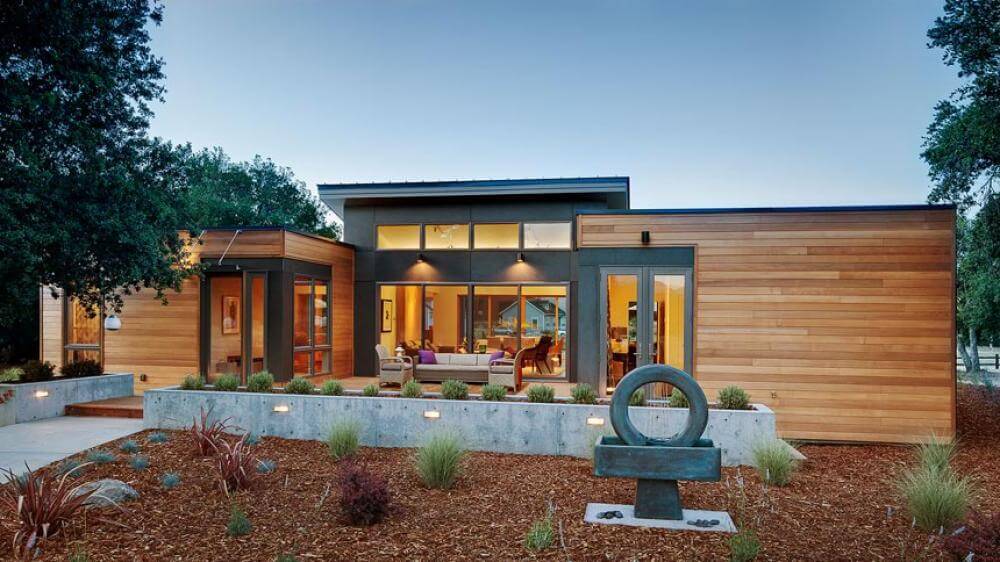From Guest Blogger Tanya Mayer: Energy Efficient Homes Are Good For The Environment

Storms, hurricanes, earthquakes, tidal waves or wildfires are among the very few human-unrelated factors that are constantly impacting the quality of the environment. All other damage-inflicting factors are human-generated, mainly because we made a habit out of over-consuming. This is particularly noticeable with households and it’s within our power to change that – we certainly have the means and right tools to do so.
Small Scale Solutions That Matter
Transitioning from an energy-depleting to an energy-efficient home requires a ‘whole-house’ type of approach that needs to consider everything from tenant behaviour patterns to:
- Home appliances and electronics
By making simple adjustments – i.e. replacing incandescent bulbs with compact fluorescent lights (CFLs) and light-emitting diodes (LEDs), purchasing energy-efficient home appliances, using smaller appliances as much as possible, turning off appliances and any other devices that are not being used – you will not only be able to cut electricity consumption by as much as 75% (consequently reducing your monthly electric bill average), but you will also actively diminish your carbon footprint (greenhouse gas emissions) thus contributing to pollution control.
There’s another point to consider as well: savings on your electricity bill can be diverted into acquiring electric vehicles which, in turn, will contribute to household savings on fuel and electricity costs.
- Insulation and air sealing
Making sure you have sufficient home insulation is among the first things (if not the very first) you need to do in order to cut down on your yearly energy usage. The insulation level in places such as the attic, the sidewalls, and crawl spaces is particularly important to this purpose. Where applicable also make sure that the kitchen exhaust fan is covered (when not in use); seal air leaks where plumbing, ducting or electrical wiring comes through walls, floors, ceilings and/or pieces of furniture and, finally, check your dryer vent to ensure that it’s not blocked (besides saving energy, this may also prevent a fire).
A note worth making:
Attached garages – actually any type of garages – are important contributors to the bottom line of your electric bill; this is why they should definitely be considered when blueprints for energy-efficient homes are drafted. Although they are perceived as ‘outside’ space (attached) garages are parts of the household and need the same attention in terms of insulation and air sealing.
The checklist for boosting energy efficiency in the garage will always include: wall insulation, gaps & leaks sealing, floor sealing and windows testing. Finally, doors insulation (or, if necessary, doors replacement) is key to safeguard your energy saving efforts, so make sure your garage doors help your overall strategy.
- Lighting and natural lighting
Solar energy is unrivalled as far as clean energy generation goes. If your home had large, south-facing windows, more than 80% of your heating would be provided by solar energy only. That being said, imagine what might happen if you had chosen to have your house fitted with rooftop solar panels. Your energy needs would be met without altering the quality of your environment.
Since electricity comes from sunlight, rather than burning fossil fuel, no direct greenhouse gas would be produced. Moreover, sunlight is a renewable energy source, something that is pretty valuable in a world with shrinking natural resources. It is true that some toxic materials are used when building the solar panels, but they’re not as harmful to the planet as traditional energy sources – not even close.
- Heating and cooling (water and air)
Countless technologies designed to either heating or cool homes are now available to us, it’s no wonder space heating and cooling account for almost half of a household’s energy use. Water heating accounts for an additional 18%, making these two consumers responsible for some of the largest energy expenses in any home. However supporting systems such as programmable thermostats and ducts provide real opportunities for saving energy (and money).
They come on top of a series of basic user tips: set temperature as low as comfortable, clean (or replace) equipment filters once a month or as frequent as possible, use kitchen and/or bath ventilating fans only if needed (these fans can pull out a houseful of warmed or cooled air in just one hour) and turn them off as soon as they have done the job, use energy efficient heat pump systems (as they provide three times more heating than the equivalent amount of energy they consume in electricity).
So, Why Are Energy Efficient Houses Good For The Environment?
They are designed to reduce the overall impact on human health and the natural environment, conserve natural resources, reduce waste, improve air and water quality. Green houses – that’s what we’ve been calling them for a while now and it’s a name closer to their express purpose.
